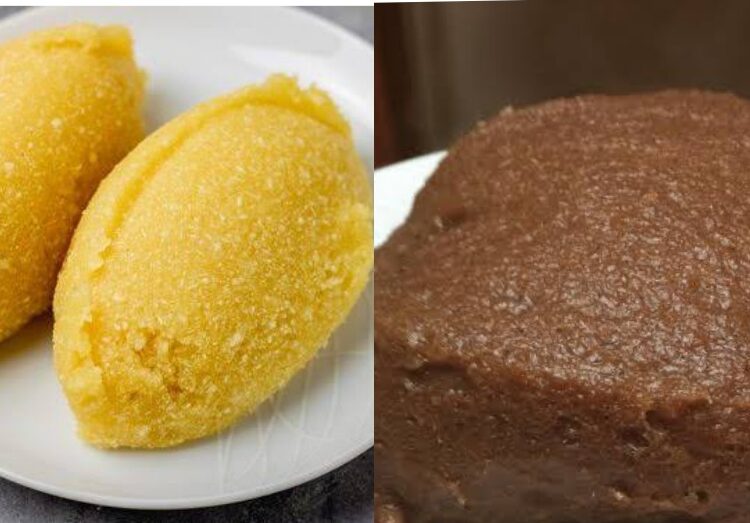For many Nigerians, especially those in the southwest, mealtime is more than just eating—it’s a cultural experience. Among the myriad of beloved Nigerian dishes, the debate between Amala and Eba is one that stirs strong opinions, particularly in the heart of Yoruba land. Amala, the soft, dark brown “swallow” derived from yam or plantain flour, is often seen as a true embodiment of Yoruba heritage, while Eba, made from garri, is equally popular across the country. However, when it comes to taste, texture, health benefits, and cultural relevance, Amala arguably holds a unique edge over Eba.

. A Unique Flavor and Texture
Amala’s unique preparation and distinct color set it apart from other swallows. Its smooth, slightly sticky texture has a melt-in-your-mouth quality, allowing it to perfectly absorb flavors from soups like ewedu, gbegiri, and egusi. The earthy taste of Amala, especially when paired with the mildly spicy, okra-infused ewedu and savory gbegiri (bean soup), brings out a depth of flavor that many feel Eba simply cannot match. On the other hand, Eba has a drier texture that can feel starchy and grainy, sometimes overpowering the soups it is paired with. For a more complex eating experience, Amala’s distinctive texture offers a satisfying departure from the norm.

Tradition and Culture
To Yoruba people, Amala is much more than just a dish. It represents a connection to history and heritage. Amala is often served at weddings, naming ceremonies, and other significant gatherings, symbolizing unity and family bonds. Eba, while delicious and widely appreciated, does not evoke the same sense of cultural significance. Eating Amala is a reminder of tradition, something deeply rooted in the Yoruba identity, whereas Eba, though widely loved, is more commonly associated with convenience.
Nutritional Edge
Amala made from yam flour has a low glycemic index, which makes it a healthier choice, especially for those managing diabetes. The complex carbohydrates in Amala provide a steady release of energy without spiking blood sugar levels. Eba, on the other hand, is high in carbohydrates and can cause a quick spike in blood sugar, which may be problematic for those who are conscious of their sugar intake. Additionally, Amala contains essential minerals such as iron, which contributes to energy levels and helps combat anemia.
4. Aesthetic Appeal
The unique dark color of Amala gives it an aesthetic appeal that few other swallows can boast. This rich, earthy tone makes any plate feel like a work of art, especially when paired with the vibrant greens of ewedu, the creamy yellow of gbegiri, or the reddish hues of tomato-rich stews. In comparison, Eba’s pale yellow appearance might seem bland, lacking the visual depth that Amala brings to a meal.
5. Adaptability and Innovation
Amala is no longer limited to traditional settings; chefs and food enthusiasts are constantly innovating with it. From fine dining restaurants to street vendors, Amala is being reinterpreted with creative twists, served alongside various unique ingredients. This adaptability has contributed to a resurgence in its popularity, showcasing it as a dish that is both timeless and versatile.
Conclusion
While personal taste always plays a role, the reasons for Amala’s dominance over Eba lie in its rich cultural significance, healthier nutritional profile, and distinctive flavor. For many Yoruba people—and indeed, for Nigerians across the country—Amala isn’t just food; it’s a symbol of pride, identity, and nostalgia. Eba, beloved in its own right, is undeniably popular, but Amala has managed to capture hearts on a level that transcends the everyday meal.













